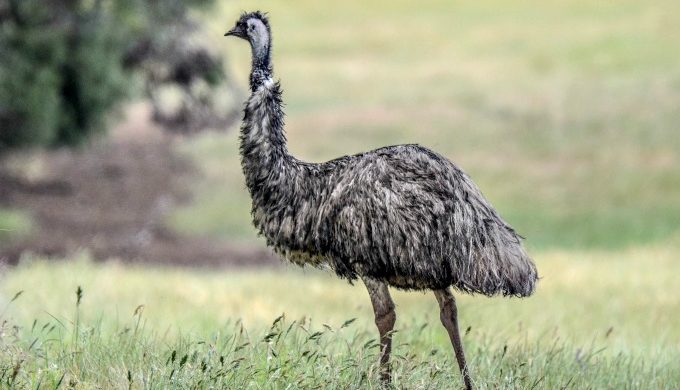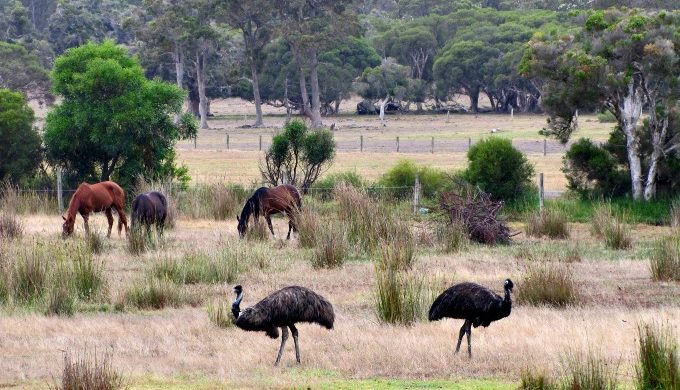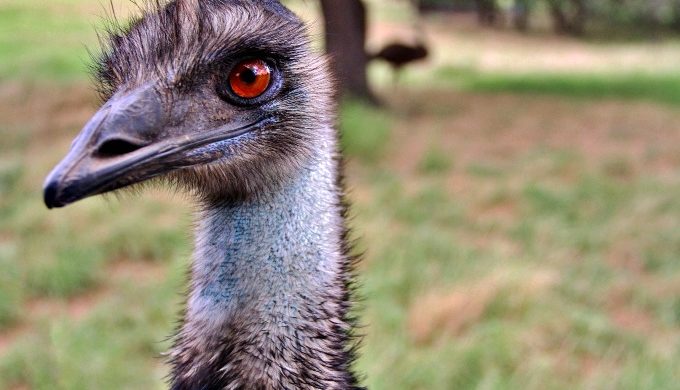Let’s take a trip down memory to the 1990s: remember when every magazine promised that the sure-fire way to lose weight was to eliminate fat from your diet? Fat-free everything, plus step aerobics and Tae-Bo were the key to achieving the physique of Halle Berry or Brad Pitt. Suddenly beef was out (too high in fat), and chicken was in… until Texans just couldn’t stomach yet another dry chicken breast, as visions of red meat danced in their heads. Enter the emu as the long-awaited solution to the low-fat, red-meat dieters conundrum.
Suddenly, emu farms were popping up all over Texas, and Texans were trying their hands at such culinary experiments as emu kabobs and emu roasts. Unfortunately, you’d be hard-pressed to find an emu filet at your local grocery store these days. So, whatever happened to this emu farming craze that threatened to turn Texas’ almighty beef industry on its ear?
The World’s Second-largest Bird
Photo: Flickr/peterichman
The emu is native to Australia and is the second-largest bird on the planet. The emu are cousins to ostriches (the largest bird) and are flightless. They can weigh upwards to 120 pounds and stand over 6 feet tall. In the 1990s, in response to America’s thirst for a lower-fat red meat option, farmers began dabbling in raising emu. The meat contains myoglobin, which is the protein that makes meat red, without the fat content of beef. This made emu meat very desirable to health-conscious consumers.
Smaller Environmental Footprint than Cattle
Flickr/Brett and Sue Coulstock
The environmental footprint of raising emus is also considerably less impactful than raising cattle. For instance, according to National Geographic, it takes at least 5 acres of land to raise just one cow, but less than three acres to raise one emu. Also, each emu yields about 25 pounds of meat as well as several gallons of oil, which is used as salves and in industrial products.
Flickr/meltedplastic
Unfortunately, the concept of emu becoming the next red meat never quite took hold. While Texas still has the largest emu population in the United States, proper marketing of the product never came to fruition—especially in comparison to the beef industry’s behemoth and tenacious marketing campaigns. Also, the price of emu meat is astronomically high. For example, a pound of emu meat can cost anywhere from $25 to $30 (compared to about $8 a pound for high-quality beef). All of these factors, including the fact that many of the farmers who jumped on board the emu wagon in the 1990s are now aging out of the industry, with no one left wanting to take on this uphill battle, has resulted in Texas emu farms disappearing left and right.
There are hopes that emu farming will one day regain momentum, and that farming practices will streamline and become more efficient, making emu farming a more successful venture. With beef still reigning supreme in Texas, it might be a hard-fought battle to bring back the big bird. But, among other things, Texans are known for our ingenuity, and we’re not likely to “bury our heads in the sand” in the face of progress… especially when it comes to what we serve at our dinner tables.





